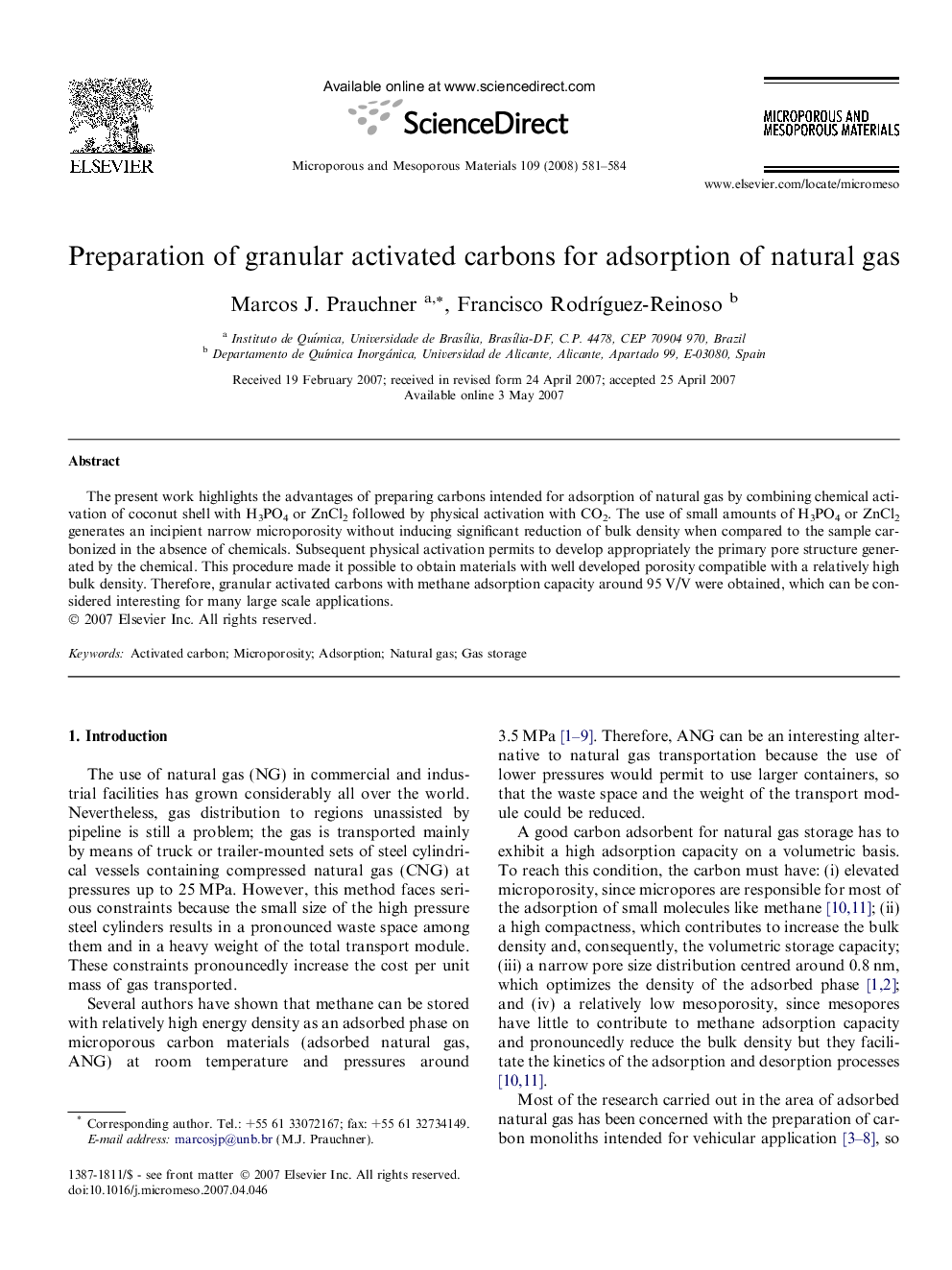| Article ID | Journal | Published Year | Pages | File Type |
|---|---|---|---|---|
| 76470 | Microporous and Mesoporous Materials | 2008 | 4 Pages |
The present work highlights the advantages of preparing carbons intended for adsorption of natural gas by combining chemical activation of coconut shell with H3PO4 or ZnCl2 followed by physical activation with CO2. The use of small amounts of H3PO4 or ZnCl2 generates an incipient narrow microporosity without inducing significant reduction of bulk density when compared to the sample carbonized in the absence of chemicals. Subsequent physical activation permits to develop appropriately the primary pore structure generated by the chemical. This procedure made it possible to obtain materials with well developed porosity compatible with a relatively high bulk density. Therefore, granular activated carbons with methane adsorption capacity around 95 V/V were obtained, which can be considered interesting for many large scale applications.
